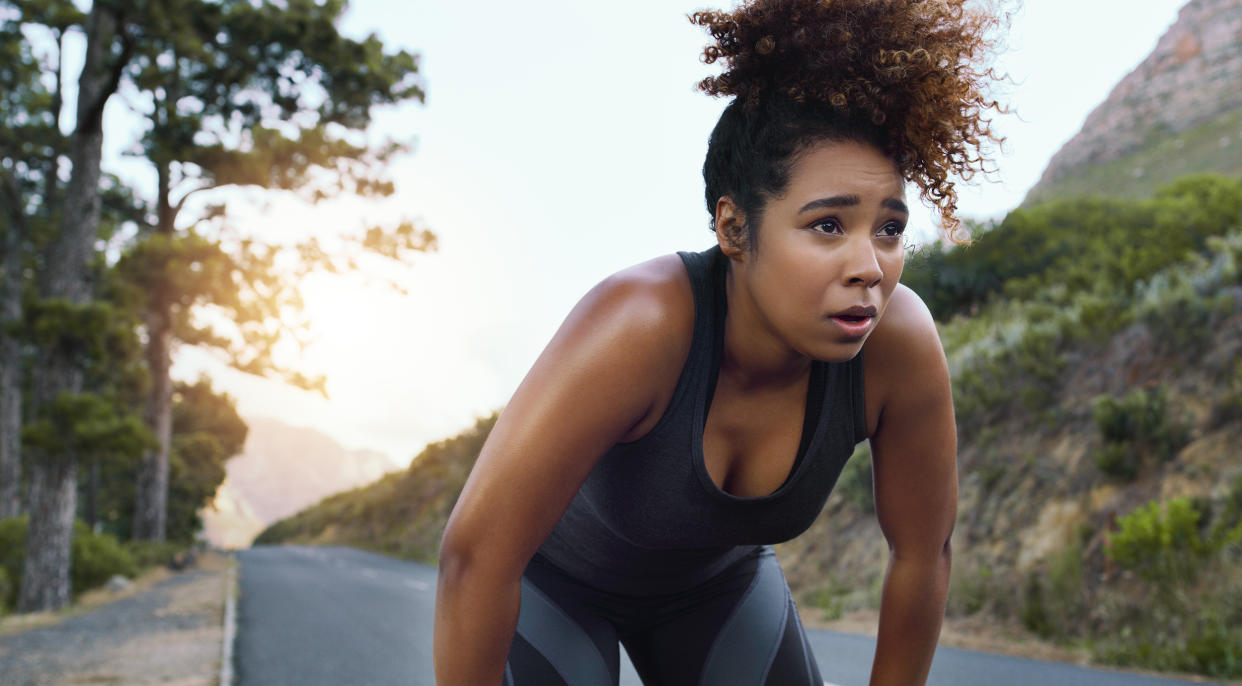Plastic surgeon warns 1 type of exercise ages your face faster

A New York plastic surgeon has gone viral for cautioning that lots of running can prematurely age the face.
“Have you ever seen a long-distance runner, long-time runner that didn’t have a gaunt, old face?” Dr. Gerald Imber asks in a TikTok video that has been viewed almost 3 million times.
“That’s what happens,” he continues, calling it his pet peeve. “Your knees go, your ankles go, your back goes and it’s kind of dumb.”
Imber says he’s just calling it like he sees it and that people watching the clip have to take it with a grain of salt and a sense of humor.
One reason lots of running leads to premature facial aging is all the bouncing — there’s no “cheek bra” to hold the face in place as gravity takes a toll, he notes.
“If you take a look at any slow-motion film or a romantic comedy of two people running towards one another on the beach, you see their cheeks going up and down, up and down,” Imber tells TODAY.com.
“Every single time your heel pounds on the ground, it pulls a little bit on the collagen and elastic tissue. That is essentially the reality of the loss of elasticity. It’s an undeniable fact because you can see it move. It’s also unquantifiable because nobody wants to take biopsies every two weeks of their cheeks.”
He recommends no-impact or low-impact exercise
Another reason Imber cites for the “gaunt, old” face is the loss of facial volume. Long-distance runners are thin to begin with and everyone loses face volume as they age, which can be more pronounced with extreme exercise, he says.
Dr. Boris Paskhover, a facial plastics and reconstructive surgeon at Rutgers New Jersey Medical School, says he doesn’t disagree.
“If you’re doing all this super high intensity aerobic exercise, you’re going to lose body fat everywhere. And if you lose body fat in your face, well then you’re going to have that gaunt, thinned-out look,” Paskhover tells TODAY.com.
But there’s no objective clinical evidence proving either that or the notion that bouncing while running ages the skin by stretching it, he says. Paskhover calls the video “commentary than anything else.”
Imber is upfront that his comments are essentially anecdotal and subjective.
He recommends exercise that minimizes the impact on joints and soft tissue such as riding on a stationary bicycle or using a stair machine. It’s perfectly fine to run a little bit every day or a few times a week, but the idea is to avoid the “repetitive beating that your face is taking” with more extreme running, he adds.
Long-distance running and the heart
Beyond what long-distance running can do to the skin and joints, there’s also the question of how it impacts the heart.
The benefits of regular exercise are clear, including blood pressure reduction, cholesterol improvement and a mental health boost, says Dr. Andrew Freeman, director of cardiovascular prevention and wellness at National Jewish Health in Denver, Colorado.
But long-distance running may be both good and bad for the heart. Marathon runners show small markers of myocardial damage such as troponin in the blood, and a study showed some degree of heart muscle scarring that occurs after long-distance running for a while, Freeman says.
Every year in marathons, even the more competitive ones where people have been training for decades, runners have heart attacks, he adds.
“That said, we know that people in societies that move more and move longer seem to do better in that they have less heart disease. So it’s hard to balance all of that,” Freeman tells TODAY.com.
“There might be a dose (of exercise), if you will, that may be very different for different people.”
The minimums are clear: If you don’t exercise at all, outcomes are always terrible, Freeman says. The maximums are less well known. Some people can run for hundreds of miles with no adverse issue while others can’t and it’s very difficult to know who’s who, he notes.
Freeman advises people to check with their doctor first and then aim for 30 minutes of breathlessness a day.
“There’s a lot of controversy as we get to the higher levels of exercise about what’s right,” he says. “But I really want to be careful that we don’t dissuade people from exercising.”
This article was originally published on TODAY.com

